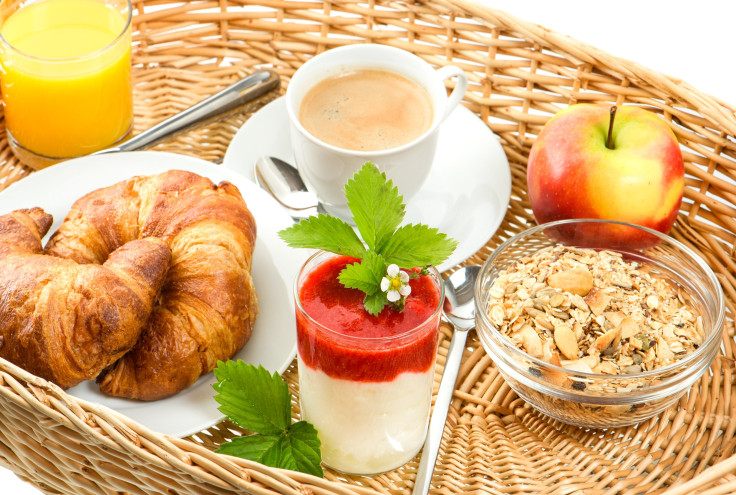The Super Shred Diet Helps You Get Lean With Hourly Food Schedules, Healthy Recipes, And Bacon

Though you may be tired of New Years resolution diet fads, there is one relatively novel one out there that at least doesn’t involve a magical weight loss pill, or a citrus diet where you only consume liquids. Dr. Ian Smith, both a diet expert and a medical doctor, has released a new book presenting a diet that holds your hand to basically teach you how – and when – to eat properly.
Though any diet that claims it will help you lose weight fast ought to be approached with caution, Dr. Smith’s ‘Super Shred’ diet may be worth a glance – simply because he doesn’t urge you to do anything extreme, like starve yourself. Instead, the Shred diet is based largely on timing and breaking up your calories into many small meals throughout the day, as well as giving yourself your occasional piece of bacon or diet Coke to help you stay on track without losing motivation.
“The key to Super Shred is timing,” Dr. Smith said in a video interview with ABC News. “You’re going to be eating every two to three hours to keep your metabolism stoked, and do not skip meals because then you end up over-indulging in the next meal.”
The diet is divided into weeks and then days, with each meal and snack outlined to the tee. For people who want to lose weight fast before a wedding or to jump-start a diet, the Shred diet offers a “fast track” version that claims you can lose 20 pounds in four weeks. Once the 4 week diet is completed, weight watchers can then move into the long-term diet which will continue laying out each meal and calorie consumed to maintain optimal metabolism.
A typical day as outlined by Super Shred Week 1 involves a breakfast consisting of one piece of fruit (an apple, raspberries or strawberries), and a choice between oatmeal or 2 egg whites. One cup of water and one cup of green tea or hibiscus tea are “musts” for the morning, and a cup of coffee (with no more than one packet of sugar or one tablespoon of milk) is optional. A few hours later, the participant can eat a snack, such as a granola bar, grape tomatoes, or fruit. Meal 2 can be either a protein shake or fruit smoothie, and meal 3 is a large green salad. Finally, dinner has to consist of two vegetable servings, as well as a 5-ounce piece of protein such as lean beef, chicken, or turkey. “Bonus” recipes include the “Blueberry Swizzle” smoothie and butternut squash and apple soup.
You don’t have to eat perfectly, just eat better. The diet even includes diet sodas such as Diet Coke, and a piece of bacon along with one pancake, because it’s realistic, Dr. Smith says. People who don’t like what they’re eating won’t stick to the diet, he told ABC News. In the fourth week, there are two slices of pizza that the dieter can eat: the key is portion control, and eating these “treats” in moderation.
The table below is a sample schedule for meals and snacks. “Timing is essential, as it distributes your calories in a way that keeps your fat-burning metabolism maximized and keeps your insulin hormone levels as stable as possible,” Dr. Smith writes. “Erratic hormone levels can cause weight gain, so the meal spacing structured in this program seeks to avoid hormone spikes as much as possible.”
7:30 A.M. Awake
8:30 A.M. Meal 1
10:00 A.M. Snack 1
11:30 A.M. Snack 2
12:30 P.M. Meal 2
4:30 P.M. Meal 3
7:30 P.M. Meal 4



























